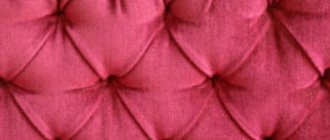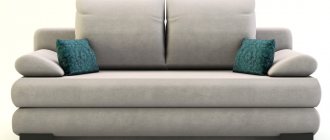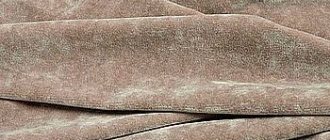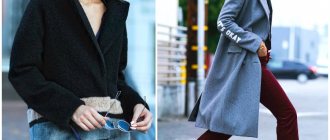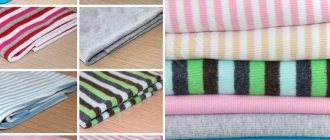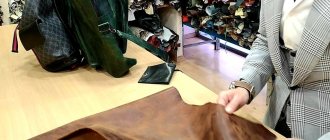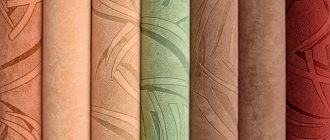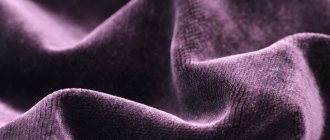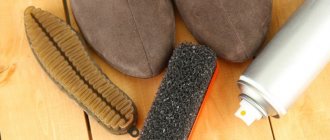What is velor (advantages, disadvantages)
It is considered a pure wool material, soft and pleasant to the touch. It is of artificial origin. Notable for a number of advantages:
- keeps warm;
- "breathes";
- does not wrinkle;
- does not stretch;
- pleasant to the body;
- costs less than its analogues.
It has several significant disadvantages:
- soiled - stains from its surface are difficult to remove;
- requires attention and constant care.
What is the difference
Many people mistakenly believe that velor and velvet are the same fabric. Although the two materials are indeed similar, they still have certain differences.
| Velvet | Velours |
| Made from silk | Made from wool |
| The basis is short pile | The basis is a long pile |
| Natural material | Artificial material |
| Firm feel | Soft to the touch |
| Expensive | Cheaper than velvet |
What is velvet (advantages, disadvantages)
This exquisite and expensive fabric of natural origin has a huge number of advantages:
- does not irritate the skin;
- does not stretch;
- keeps warm;
- does not gather dust;
- shines and shimmers favorably when draped;
- durable;
- looks noble.
Disadvantages of velvet:
- creates volume, which may be disadvantageous for women trying to hide extra pounds;
- requires careful care;
- has a high cost.
What is velvet
Previously, velvet was used to make clothes for aristocrats.
And now this material is considered rich. Despite the decline in elitism, velvet has not lost its luxurious appearance.
The fabric is made by weaving 5 threads. They can be cotton, wool or silk. 4 threads are the base, and the last one is the pile.
Velvet has a vertical structure.
The main characteristics of the material include:
- glitters beautifully and shimmers in the sun;
- can be draped;
- looks expensive;
- does not stretch;
- retains heat well;
- comfortable to wear;
- does not cause discomfort;
- wear resistance.
The disadvantage is that it is very high maintenance and expensive. It also adds volume to clothing and can visually increase body parameters.
What is the difference
Many people mistakenly believe that velor and velvet are the same fabric. Although the two materials are indeed similar, they still have certain differences.
| Velvet | Velours |
| Made from silk. | The raw material is wool. |
| The base is short pile. | Consists of long pile. |
| Natural material. | It is of artificial origin. |
| Firm to the touch. | Soft to the touch. |
| Expensive. | Cheaper than velvet. |
Differences between velor and velvet
Velor and velvet are very similar both in appearance and in their qualities. But these are completely different fabrics. What is the difference between velor and velvet?
Velor is a material created using cloth weave of wool or cotton threads. The front surface is fleecy and soft. The uniqueness of its pile is that designs or ornamental patterns can be cut directly onto it. This creates a volume effect.
The velvet pile is completely different. The material is made from silk, wool or cotton using the five-thread method, one of which is pile. Three-dimensional designs on velvet are rare; most often the entire canvas is painted.
Velvet is almost always made from natural raw materials, and accordingly, it costs more than velor. Artificial threads are often added to velor fabric. This makes it wear-resistant, durable and easy to clean.
The main difference between velor and velvet is the way the threads are intertwined. Due to the manufacturing method, the density of velvet is higher, which makes it denser to the touch. This also gives the material a solemn look, which is often used by designers to create spectacular evening dresses, jackets and suits. Light elegant dresses and tunics, trousers and overalls are sewn from velor. Plush velor with long pile is used for soft toys, warm sports and home suits, and furniture upholstery.
Velvet and velor differ in the methods of care. The first is a heavy material in every sense. It does not tolerate bright sun and frequent washing; products must be stored in a special case. Velvet items cannot be washed in a machine - it is better to use dry cleaning. Velor is less whimsical. It is also not intended for machine wash, but it is very easy to hand wash, dries quickly and is almost wrinkle-free. After cleaning, just iron the pile with your hand, and the velor item will become like new again. For comparison: a velvet product can be permanently ruined by one unsuccessful cleaning - the fabric will stretch and the pile will fall off.
Both materials have found their application in the field of household textiles. Velvet is used to make luxurious curtains, drapes and bedspreads. The fabric is used for upholstery of exclusive designer furniture. It is also used in the restoration of museum and palace interiors. Bed linen and car covers are made from velor.
The differences between velor and velvet can be seen in the photographs in the catalog of the OnlineTkani online store.
You can order material on the website or by phone. Fabric catalog
Application area
Children's clothes, home clothes, pajamas, and tracksuits are made from velor. Patterned material is used in sewing evening dresses. Sometimes berets, hats, and coats are made from it. Upholstered furniture is upholstered with a special variety. Seat covers are made from automobiles, and bed linen is made from jacquard. Sometimes warm fabric is used as lining material.
Velvet is valued by lovers of exquisite outfits: lush dresses, suits, skirts, wide trousers, bodysuits, and coats are made from it. It is used to decorate shoes, sandals, and boots. Accessories are also made from this fabric: bags, clutches, headbands. Velvet, like velor, is used to upholster furniture, and curtains are made from it.
Features of the material
Quite often the fabric is used when sewing clothes and other textiles due to its advantages:
- abrasion resistance - the material is wear-resistant and quite durable;
- strength - the fabric does not deform and does not stretch;
- softness - both the front and back sides are very pleasant to the touch;
- the fabric actually does not wrinkle - if the item is washed and dried correctly, it will be easy to avoid the need to iron it;
- good thermal conductivity and density - the fabric perfectly retains heat and ideally protects against cold gusts of wind.
How to care
Velvet is considered a “capricious” fabric. In order for its appearance to be worthy, it is necessary to devote a lot of time to caring for it. Velvet items have to be cleaned regularly, because dust and pet hair collect on it.
There are also problems with velor. It is not recommended to wash it; it is enough to remove dirt, which appears quite often, with a damp cloth.
Pros and cons of velvet
Being an expensive fabric of natural origin, velvet has many advantages:
- does not cause allergies or skin irritations;
- does not have the ability to stretch;
- holds heat well;
- does not become covered with dust;
- drapes perfectly, shimmers and shines;
- has a long shelf life;
- has a noble appearance.
Among the disadvantages of the material, it is worth highlighting the following:
- not suitable for clothing for overweight women because it creates a volume effect;
- needs careful care;
- has a high cost.
Velvet is made from cotton, silk and wool threads. It has a high pile, which is also called plush. Varieties of velvet are corduroy and corduroy.
Washing, drying, ironing
Items made from exquisite materials can only be washed in a delicate or manual mode; it’s even better to entrust the matter to professionals by taking them to dry cleaning. The water temperature should not be more than 30 °C. Products must not be soaked: it is better to wash them immediately.
When washing things, it is unacceptable to use bleach or other products of this kind. Another strict rule: do not twist velvet and velor clothes. Just squeeze it out and hang it to dry. To speed up the drying process, you can use a hairdryer (but not an iron!), without bringing it too close to the fabric. You should not hang a product made of velor or velvet to dry in direct sunlight - the material may lose color.
Ironing delicate items is not recommended. If the item is too wrinkled, you can turn it inside out and lightly run an iron over it. Another option is to steam it. In this case, the folds will unravel in a matter of minutes.
Furniture made of velvet or pile is treated with damp sponges or vacuumed. It is unacceptable to use chemical stain removers - the fabric may begin to “bubble”.
Cons of corduroy
Some housewives do not risk purchasing corduroy items because:
- the material is difficult to care for;
- Products made from cotton corduroy after washing give ;
- corduroy, made with the addition of synthetic fibers, is well electrified and also attracts dust and animal hair.
Products made from corduroy always visually look expensive and beautiful. Anyone can buy something made from this material, however, they must be prepared to provide it with proper care.
Velor and velvet are very similar materials in composition and purpose. What are the specifics of their use in practice?
What is the difference between velor and velvet?
Velor and velvet are essentially related materials, similar in appearance and characteristics, but there are significant differences. To make the difference clear, it is better to refer to the comparative table, which clearly shows the difference between velvet and velor.
| Characteristics | Velvet | Velours |
| Fabric characteristics | dense, fleecy, drapes easily, wrinkles easily, | soft, fleecy, drapes easily, hardly wrinkles |
| compound | only natural fibers (natural silk or wool, sometimes cotton) | natural and synthetic fibers (wool, cotton, polyester, elastane, etc.) |
| elasticity | No | can be elastic |
| does it allow air to pass through or not? | Yes | Yes |
| absorbs moisture or not | Yes | Yes |
| Does it fade or not? | Yes | Cheaper fabrics may fade |
| strength | Yes | Yes |
| pile length | short pile | long pile |
| Features of working with fabric | Requires certain skills and experience to work with it | Slightly easier to process than velvet, with the exception of elastic types |
| care features | requires careful care: hand wash at low temperature, do not use chlorine-containing or aggressive products, do not iron, can be treated with steam from the reverse side, holding the product suspended, in case of serious contamination, contact dry cleaning | easier to care for than velvet: machine washable (delicate cycle) at temperatures up to 40 degrees, no ironing required, can be steamed if necessary |
| what is it used for | items of clothing, evening wear, accessories, bags, shoes, curtains, furniture upholstery, decorative pillows, theater costumes and scenery | items of adult, children's and home clothing, evening wear, outerwear, hats, shoes, bags, accessories, furniture upholstery, car seat upholstery, curtains, bedspreads, decorative pillows, theater costumes and scenery |
| price | high | a little cheaper than velvet |
Comparing velvet and velor, it begins to become clear what the difference is. Whatever the purpose of the velvet material, it will be made using the same method with minor differences, and velor fabrics can be divided by area of application:
- Dress;
- Curtain;
- Furniture;
- Automotive.
All of these varieties will differ significantly from each other, making comparisons difficult. For the same reason, it is impossible to definitively answer which is cheaper.
In this case, it is fair to compare dress velor and classic velvet, the main differences of which are the composition of the fabric, the methods of weaving the threads and the price.
Both materials are fleecy and look beautiful, but it is sometimes very difficult to understand by appearance how velvet differs from velor.
Velvet has a short cut pile and a natural composition. Velor is often made with a mixture of synthetics, elastane and longer looped pile.
But how can the common man distinguish them based on these criteria? The answer is with the help of tactile sensations, the first is more rigid, if you crush it, then creases will remain, the second is much softer and easily returns to its previous state.
Types of fabric
Velor is a fabric with soft, rather long and thick pile. It is made from natural cotton, silk and wool, and with the addition of artificial fibers polyester and lycra. The composition of the canvas determines what it can be used for.
So, velor is distinguished:
- Cotton. This most often knitted stretch velor can be called a universal eco-fabric. Products made from it “breathe”, retain heat, do not wrinkle, practically do not stretch and are therefore very durable. It is used to make home and children's clothing, comfortable sports suits.
- Woolen. During the production process, the cloth base of woolen drape and felt fabrics is felted (pressed) for density, after which the pressed drape is subjected to a napping procedure. The pile can be fluffy (fur), velor and pressed. The fabrics are used mainly for sewing suits and outerwear.
- Drape velor is a very warm fabric made from high-quality and expensive wool using the satin weaving method.
- Furniture. Velor upholstery is resistant to scratches by pets, looks great, retains its original appearance for a very long time and is available in a wide range of colors.
- Jacquard (long pile forms an original pattern on the base). This high-quality and durable fabric is used for curtains, covering decorative pillows, and mattresses.
- Auto velor. Thanks to its special impregnation, it is widely used for sewing car seat covers and upholstery.
- Natural. For production, any type of leather that has defects on the front side is used. Bags and shoes are made from natural velor.
